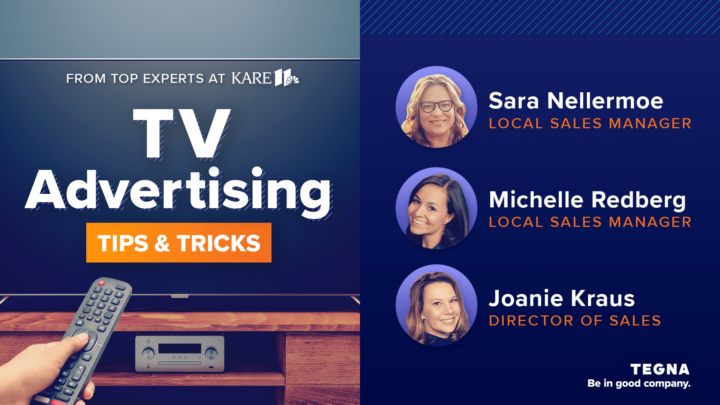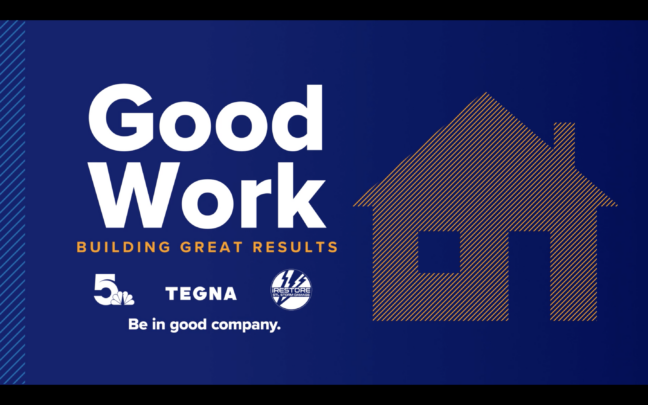How to Buy TV Ad Spots
Are you looking to buy TV spots for your business? Here’s everything you need to know about buying TV ads, from length to budget.

Advertising is essential for any business looking to make a mark. While digital advertising has increased, TV advertising remains a powerful tool for reaching a broad audience and establishing brand recognition. However, buying TV ad spots can be daunting for those unfamiliar with the process.
Here’s everything you need to know about buying TV ad spots, from understanding the ROI to navigating the different types of ads and budget considerations.
The ROI of Buying TV Spots
ROI entails comparing the expenses associated with an ad campaign to the profits it yields. These investments typically include production and post-production costs such as talent fees, location permits, cameras, and lighting. Post-production expenses include editing, media buying, and supplementary fees like consulting or agency costs.
Additionally, the pricing of TV spots typically depends on factors such as ratings, audience demographics, and time slots. Investing in TV advertising allows businesses to reach a large and diverse audience, increasing brand awareness and driving sales.
While the pricing of media buys may vary, calculating the ROI is unique to each brand’s business and goals.
“The KPIs you establish will invariably hinge on your brand’s growth goals and objectives. They could encompass a broad spectrum of objectives, ranging from brand awareness, acquiring new customers and increasing foot traffic, to attracting a higher-caliber audience and augmenting overall sales,” Matt Ginn, TEGNA’s Director of Enterprise SALES, explains.
He also notes that ROI can transcend mere monetary value. “While delivering ROI remains fundamental to our mission, we also prioritize serving the greater good of our communities,” Ginn asserts. “When local businesses flourish, it fuels the local economy, fostering growth and job opportunities.”
How Do I Buy TV Spots for My Business? 5 Steps
Purchasing TV spots for your business involves several steps to ensure a successful advertising campaign. Here’s a breakdown of how to navigate the process effectively:
1. Research and Identify Target Audience
Before diving into buying TV spots, it’s crucial to understand your target audience. Conduct market research and create persona profiles to determine demographics, interests, and viewing habits. This knowledge will guide your decisions regarding which TV channels and programs to advertise on.
2. Set Clear Objectives and Budget in Your Media Plan
When creating your media plan, define your advertising objectives, whether to increase brand awareness, drive sales, or promote a specific product or service. Establish a budget that aligns with your goals and ensures cost-effective advertising.
3. Directly Contact a Station or Station Group
One option for buying TV ad spots is directly contacting a station or station group and seeing how they can help. At TEGNA, we have local and national marketing experts to help you get the best business outcomes, and we will first have what is often referred to as a “discovery” session to determine the best action plan, which will include:
Pricing and Budget: These initial conversations will include questions about your target audience, objectives, and budget. We can also provide pricing information based on different time slots and programs. It’s also important to understand ratings data in your market to understand the viewership demographics of each slot.
Develop Timelines: We can also help develop a timeline for your advertising campaign, including key dates such as ad creation, submission deadlines, and air dates. Allow sufficient time for production and approval processes to ensure your ads are ready to air on schedule.
High-Quality Creative: Work with a professional creative team to produce compelling and engaging TV ads that resonate with your target audience. Consider factors such as messaging, visuals, and call-to-action to maximize the effectiveness of your ads.
Negotiate and Finalize Contracts: Negotiate pricing and terms with TV stations to secure favorable deals for your advertising campaign. Review contracts to ensure they accurately reflect agreed-upon terms regarding ad placement, airing frequency, and duration.
4. Launch The Advertising Campaign
With all the above pieces in place, you should be ready to launch your advertising campaign according to your timeline. But remember that creating an effective campaign isn’t just setting it up and forgetting it. Be sure to monitor the performance of your ads and make adjustments as needed to optimize results. Tools such as TEGNA Attribution can help measure your ads’ effectiveness, allowing for real-time optimizations.
5. Evaluate Results and Adjust Strategy
After the campaign concludes, evaluate its effectiveness based on predefined objectives and KPIs. Measure ROI by comparing the costs of the campaign to the outcomes achieved. Use insights gained to refine future advertising strategies and improve outcomes. By following these steps and leveraging the expertise of TV advertising professionals, you can effectively buy TV spots for your business and achieve your marketing objectives.
Types of TV Ads to Buy
Businesses have several options when buying TV ad spots. Knowing your target audience’s preferences and viewing habits will come in handy and can help guide which types of ads to choose from.
Commercials
Traditional commercials are a popular choice for TV advertising. These ads typically range from a few seconds to a minute in length and can be highly effective when executed well.
Content Sponsorships
Content sponsorship is a common marketing strategy brands use to reach their target audience more subtly and engagingly than traditional advertising. It allows brands to leverage the credibility and audience of the content creators while also providing valuable content to the audience through sponsored videos, social media posts, blogs, events, and more.
Lifestyle Segments
Lifestyle programming aims to entertain, inform, and inspire viewers by providing content that aligns with their interests, aspirations, and daily routines. This type of programming often features expert hosts, celebrity guests, and engaging storytelling to attract and retain audiences. Additionally, lifestyle programming can offer advertisers opportunities to target specific demographics and consumer segments interested in related products and services.
Product Placement
Product placement involves integrating a brand or product into the content of a TV show or movie. While subtler than traditional commercials, product placement can still be an effective way to reach consumers.
How Long Should My TV Spot Be?
The optimal length for a TV spot depends on factors such as the target audience and the campaign’s specific goals. However, 30-second spots are popular because they balance impact and cost-effectiveness. Meanwhile, online video ads tend to be 15 seconds to prevent a user from clicking away, and content sponsorships and lifestyle segments can offer longer ad options for product education.
Buying Local vs. National TV Spots
As brands vie for valuable audiences, three recurring questions often confront those considering TV advertising:
- Should my brand focus on local advertising?
- Should it pursue national advertising instead?
- Or should it opt for a blend of both approaches?
These questions lack a universal solution, and each brand must consider its target audience, goals, and budget, among other factors.
Broadly speaking, national spots are typically 15- to 30-second spots that provide broader exposure to a nationwide audience at a relatively low cost.
Meanwhile, Local TV advertising is often characterized by 15- —or 30-second video ads placed alongside the national network affiliates’ broadcasts or during national programming but aired locally or within specific geographic locations.
For example, let’s say a plumber in Phoenix has an ad for its local services and wants it to be placed alongside NBC’s The Voice. This ad can run alongside this national programming but will be placed locally only shown to those in the Phoenix area.
However, local TV ads aren’t limited to spots. Local broadcast TV stations—like those at TEGNA—offer content sponsorships, integrations, and many other ways to get your brand in front of interested and engaged local audiences.
How Can I Buy a TV Ad on a Budget
By implementing the following strategies and staying flexible with your approach, you can effectively purchase TV advertising on a budget without compromising the quality or reach of your campaign.
Utilize Remnant Advertising, which involves purchasing ad inventory that hasn’t been sold at its regular rate. This can be a cost-effective way to access premium ad placements at discounted prices.
Negotiate Rates: Don’t hesitate to negotiate with TV stations or networks for better rates, especially if buying multiple ad spots or committing to a long-term advertising campaign. Many stations are open to negotiation, particularly if they have unsold ad inventory.
Choose the Right Time Slots: Opt for less expensive time slots, such as off-peak hours or daytime slots, which typically have lower rates than prime time. Consider regional or local channels instead of national networks, as they often offer more affordable rates.
Track and Measure Results: Monitor the performance of your TV ad campaign closely with a tool like TEGNA Attribution to assess its effectiveness. Use metrics such as reach, frequency, and conversions to evaluate ROI, make informed decisions about future advertising efforts, and eliminate wasted ad dollars.
Should I Use Co-Op Advertising?
Co-op advertising, which involves sharing the cost of advertising with partners or vendors, can be a cost-effective way to stretch your advertising budget further. Ultimately, whether to use co-op advertising depends on your individual circumstances, the nature of your relationship with your suppliers or manufacturers, and your goals for advertising and marketing. Evaluate the potential benefits and drawbacks carefully to determine if co-op advertising aligns with your overall strategy and objectives.
Pros
Cost Savings: Co-op advertising allows you to share the financial burden of advertising with your suppliers or manufacturers, reducing your out-of-pocket expenses for marketing campaigns.
Access to Resources: By leveraging co-op funds, you may gain access to additional resources, such as professionally produced ad materials or marketing support from the manufacturer.
Increased Visibility: Co-op advertising often involves prominent placement of manufacturer logos or brand messaging in advertisements, which can enhance your credibility and visibility among consumers.
Stronger Partnerships: Collaborating on advertising initiatives can strengthen your relationships with suppliers or manufacturers, leading to potential benefits such as preferential treatment, discounts, or exclusive promotions.
Cons
Limited Control: Co-op advertising often comes with restrictions or guidelines imposed by the manufacturer on how the advertising funds can be used, limiting your flexibility and control over your campaigns’ messaging and creative aspects.
Complexity: Managing co-op advertising programs can involve coordination with multiple stakeholders, adherence to guidelines, and compliance with manufacturer requirements.
Alignment of Objectives: Your marketing objectives may sometimes align differently with the manufacturer’s, leading to potential conflicts or disagreements over the direction of advertising campaigns.
Administrative Burden: Co-op advertising programs may require significant administrative effort to track expenses, submit reimbursement claims, and ensure compliance with program requirements.
Moving Forward with Your TV Media Buying Journey
Creating a media plan is one of the most critical components of your marketing campaign, and Team TEGNA is here to help you get the most out of your ad campaigns. Armed with our award-winning portfolio of offerings, our team of marketing experts at the local and national level has driven results for thousands of businesses across the country. With cutting-edge attribution measurement, multiplatform amplification, original content, and the latest in data-driven technology, our mission is to help businesses grow and thrive. Let’s get in touch if you’re ready to place your media with TEGNA.
Frequently Asked Questions
How much does a 15-second TV spot cost?
Depending on the circumstances, a 15-second TV spot during a popular prime-time show on a national network could cost anywhere from $5,000 to $50,000 or more. On the other hand, a 15-second ad during daytime programming on a local channel might range from $50 to $1,000. It’s essential to conduct thorough research and gather quotes from multiple TV stations or networks to estimate the cost based on your specific needs and budget. Additionally, negotiating with broadcasters and exploring opportunities for discounts or package deals can help you maximize the value of your advertising investment.
How much does a 30-second TV spot cost?
Similarly, the cost of a 30-second TV spot depends on various factors, including time of day, day of the week, TV network or station, geographic location, program ratings, and seasonality.
With these variables, the cost of a 30-second TV spot can range from a few hundred dollars for local broadcasts during non-prime time slots to hundreds of thousands of dollars for national prime-time spots during highly rated programs. It’s essential to research specific advertising opportunities and negotiate with broadcasters to get the best rates for your advertising campaign. Consider audience demographics and reach to ensure you’re effectively investing your advertising budget.
How much is a local TV spot?
The cost of a local TV spot varies widely depending on several factors, including the market size, time of day, day of the week, program popularity, and duration of the advertisement. Local TV stations typically offer a range of advertising options to accommodate different budgets and objectives.





















